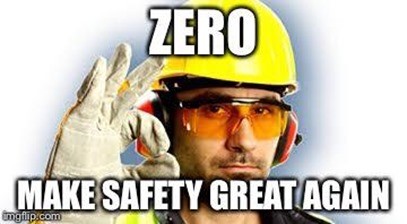Visualising Risk

Any semiotic analysis of the safety industry shows that much of what it does is text-based, table-based and checkbox-focused. This format (design) in trying to understand actions and events provides no opportunity to: ‘map’ relationships, understanding relational concepts operating in the background, envision the collective unconscious, ‘see’ how things operate on one another and provide freedom in exploration, discovery and creativity in understanding risk.
Indeed, most of the forms that people love to download in safety are about ‘not thinking’. It seems the last thing Safety trusts is the freedom of a safety adviser to think. The design of most forms in safety are dominated by engineering thinking not relational thinking. Most of the time it’s about ‘tick and flick’, ‘get it done’ as quickly as possible and then get on with the job. Then when a form doesn’t work, create another one to check why the first form didn’t work.
In SPoR we get rid of all of this needless paperwork, paperwork that mostly doesn’t work and isn’t a defence in court (https://vimeo.com/162034157 ). Indeed, most of what gets paraded about as ‘essential’ in risk and safety is pure mythology. Unfortunately, such mythology is often paraded by the regulator. It is often the regulator who cops a belting in court because it sustains such mythology. We also see such mythology in Usability Mapping (https://www.ohsbok.org.au/wp-content/uploads/2020/10/12.3.3-Documentation-Usability.pdf ). Shuffling about the order of text, forms, tables and words is not a panacea for the problems of paper-based safety and why it doesn’t work (https://safetyrisk.net/paperwork-and-usability-in-tackling-risk/ ). Especially when the proposed solution lacks any expertise in Education, Comprehension, Literacy, Semiotics, Linguistics and Theories of Learning. Just more evidence that Safety doesn’t seek Transdisciplinarity.
Whenever Safety has a problem, it keeps going back to the discipline of safety for solutions. Isn’t it strange that safety gives one so much knowledge in Epidemiology, Virology and everything from Literacy, Linguistics to Biosemiotics.
Humans are not just social beings but visual beings. The foundation of all language learning is the visualisation of gestures to meaning and meaning to text. Children learn language not by brain-centric cognition but by visual-centric embodiment. It takes children years before they can move from gesture and symbolic expression to verbal meaning and then to text. Human language development is primarily visual, verbal and gestural. Language learning coms from the linking of embodied gesture to voice and then much later to text. The June 2021 SPoR Research Newsletter focused on this (https://safetyrisk.net/cllr-newsletter-june-2021/ ). Perhaps start with a reading of this: https://www.frontiersin.org/articles/10.3389/fpsyg.2014.00506/full
How strange then that Safety is still so locked into forms-based, text-based thinking.
In SPoR we don’t just criticise ineffective methods but we offer constructive alternatives and also offer so much for free.
- https://www.humandymensions.com/shop/
- https://vimeo.com/humandymensions
- https://vimeo.com/cllr
- https://spor.com.au/downloads/tools/
All of those who undertake the free Introduction to SPoR (https://safetyrisk.net/free-online-introduction-to-the-social-psychology-of-risk/) realise very quickly just how impoverished safety is when it comes to understanding the human unconscious, the collective unconscious and the semiotic vitality of visualising risk. The current free Introduction is full and will not be offered till 2022. You can read testimonies about the effectiveness of the course in the link above. If you want to register for the Free Introduction you can register for 2022 using the link above.
When we ‘see’ risk through methods of visualisation we envision (https://www.humandymensions.com/product/envisioning-risk-seeing-vision-and-meaning-in-risk/) new and different ways of tackling risk beyond the repetition of slogans or shuffling about text boxes and forms, system changes and paper-based safety.
What is more, despite all the fear of letting go, one has to learn it and practice it to understand how it works and why it works (https://www.humandymensions.com/product/it-works-a-new-approach-to-risk-and-safety/ ). Once people learn the iCue Engagement Process, they never look back.
The iCue Method is not complex quite the opposite, the real challenge is unlearning, in learning to let go of obsolete systems and Safety mythology it has been indoctrinated to use. These closed systems are designed by someone else (usually a technocrat, engineer) that creates zombie-like compliance and prevents free thinking.
The freedom discovered in using the iCue Engagement Process liberates the user to envision many things they never saw before. It moves one from the zombie-state to free thinking, discovery and learning.
Stepping out of the paper-based quagmire is a scary thing when you have been fed years of safety mythology, complying to methods that don’t work and don’t operate at a visual, semiotic level of consciousness. What is more, when you move to the iCue Method you are not left alone but get all the tools and support provided to enact safety differently.



Do you have any thoughts? Please share them below